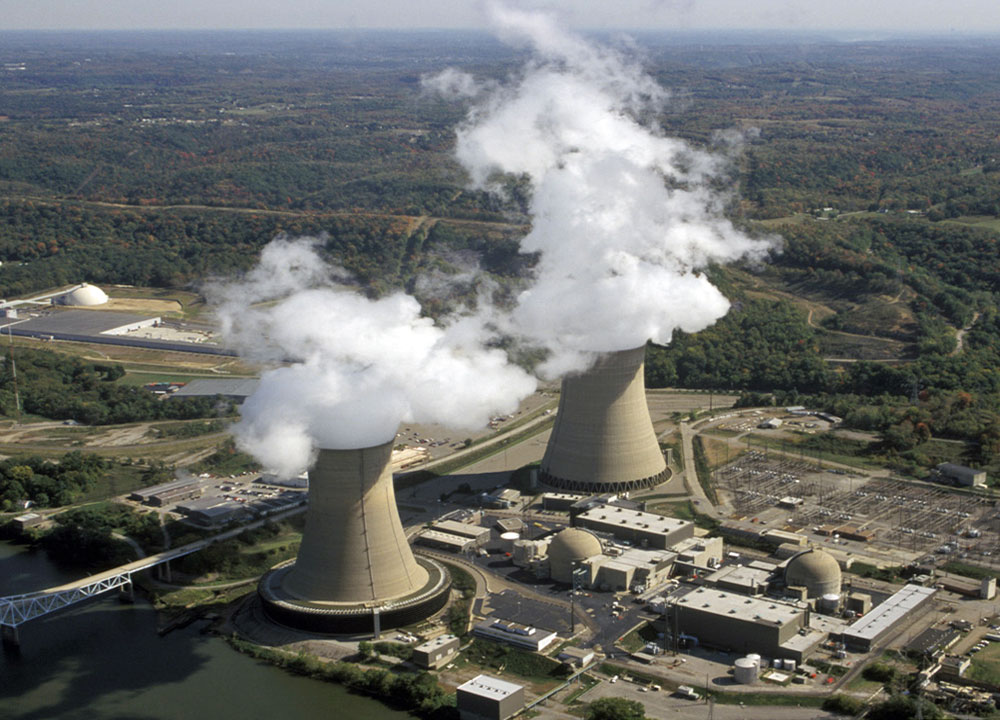The USGS Water Science School
Power-generation plants, including Beaver Valley nuclear plant in Pennsylvania, produce power by using heat (in this case, from a nuclear reactor) to covnert water into steam. The steam, very hot and under a great deal of pressure, is pumped through pipes to turn the blades of a turbine, which is connected by a shaft to a generator. The generator spins and produces electricity.
One very significant by-product of thermoelectric facilities is heat from the power-production equipment. Plants withdraw lots of water (which is why they are often located alongside rivers and other water bodies), use it to cool the equipment, and then need to release used water back into the environment. Releasing hot water back into rivers would harm the ecology, so many power plants have tremendous cooling towers, where hot water is sprayed inside and evaporation is used to cool the release water before it goes back into the environment.

Credit: U.S. Nuclear Regulatory Commission